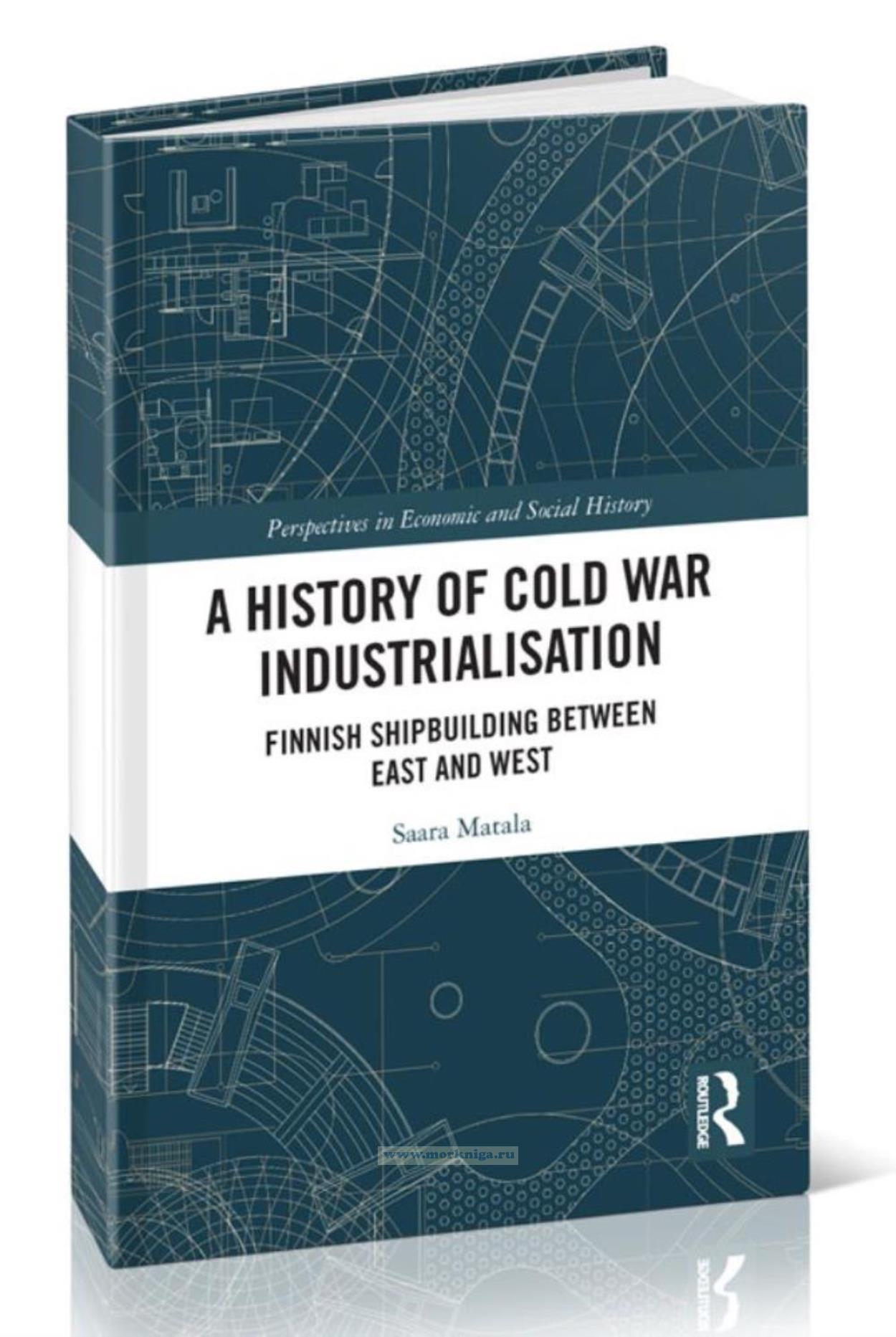A History of Cold War Industrialisation. Finnish shipbuilding between east and west/История индустриализации времен холодной войны. Финское судостроение между Востоком и Западом
Книга на английском языке
In the dead of the winter in December 1988, two ships from two worlds were moored to the building dock in Helsinki. The first one to be completed was a nuclear icebreaker Vaygach. She had just returned from the test run and was soon to steam off eastwards to join the Soviet nuclear fleet of Arctic icebreakers. The other was a luxury cruise ship Fantasy, ordered by a Miami-based Carnival Cruise Lines. She was waiting for to be fitted with extravagantly furnished nightclubs, gambling salons, and sun decks before taking off on its journey westwards to entertain American tourists. The Cold War as the confrontation between the two opposite world views-capitalist market economy and centrally coordinated socialist planning-could not be better contrasted in the hulls of those two vessels. That an American enterprise and a Soviet state organisation became customers for the same shipyard in a non-allied country did not fit well with the overall picture of the polarised world.
Contents
List of figures
List of tables
List of abbreviations
1 Introduction
History of Cold War industrialisation
Steel, money, and political power: outlining the research approach
Sources of Cold War industrialisation
Finlandisation and national myths
Archival sources
Scale and structure of the Cold War shipbuilding
Navigational chart of the study
2 Before the Cold War shipbuilding
Seafaring in the borderland before the Second World War
From war to peaceful coexistence between Finland and the Soviet Union, 1944–1948
War reparations and industrial restructuring, 1944–1952
The foundations for the Cold War shipbuilding
3 Technology diplomacy: civilian ships carrying political weight and state leaders
Entrance to the Soviet Arctic: building business relations on ice, 1952–1975
Icebreaker diplomacy: friendship, delivered, 1965–1976
Submersible War: technopolitics of state-industry demarcation, 1986–1987
Non-radiant nuclear ships: technopolitical radiance fading out, 1978–1989
Conclusion
4 Institutional interface to the Soviet market: bilateral trade and Finnish shipbuilding
Institutional interface to the socialist planning
Expanding shipyards and dependency on Soviet market, 1952–1974
Creating an illusion of stability, 1982–1985
Farewell to the special relationship, 1986–1990
Conclusions
5 Beyond business as usual: techno-scientific and industrial cooperation
Re-branding capitalist companies: beginning of the cooperation
Co-creating Arctic expertise: specialisation in technology with no domestic demand
Scientific-technical cooperation: towards the Arctic offshore, 1977–1990
Intra-industry trade: buying friendship and goodwill
Industrial cooperation: playing the role of an active partner, 1988–1990
Conclusions
6 From consensus to competition: reorganisation and rationalisation in shipbuilding
Cooperation, consensus, and concentration
Riding the waves of despair and prospects: first Shipbuilding Committee, 1977–1982
The turn of the tide: towards radical reorganisation, 1983–1986
Bargaining over state interventions, 1987–1988
Big bankruptcy changes the atmosphere, 1989
At the crossroad of national and international, 1990–1992
Conclusions
7 National competitiveness and international economy: shipyard financing and state aid
Emergence of export financing and guarantees
Foothold on the home market
International competitiveness on the threshold of Europe
Into a normal European country
Conclusions: state and national competitiveness
8 Conclusions
Archival sources
Oral history
Interviews conducted by the author
Bibliography
Other oral history sources
Parliamentary documents
Saannoskokoelman sopimussarja (SopS) [Finnish international treaties]
Saadoskokoelma (Saadk) [collection of acts and decrees]
Muut valtiopaivaasiakirjat (VP) [Other Parliamentary documents]
Court Decisions
Committee reports and unpublished studies
Statistical collections, databases, and standards
Newspapers and magazines
Memoirs and diaries
Literature
Index

